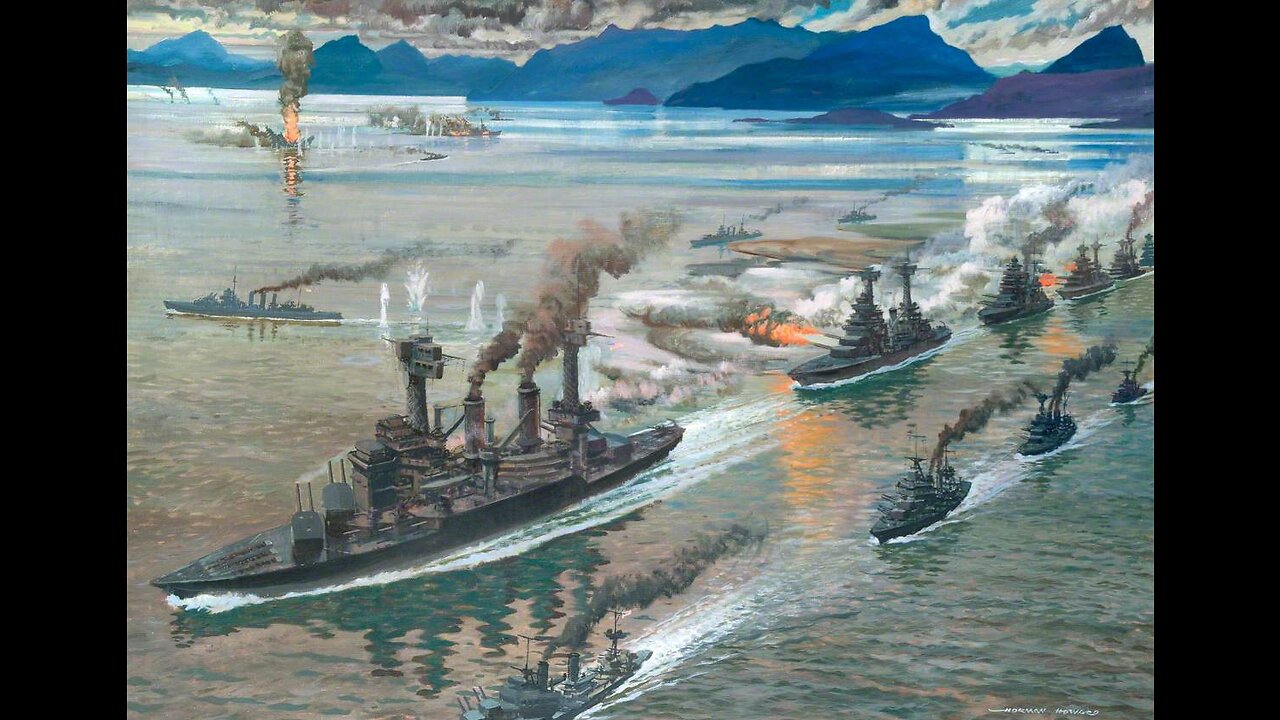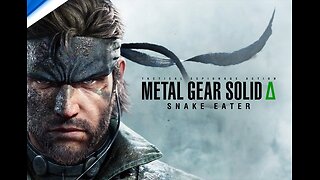Premium Only Content

The Battle of Leyte Gulf
This new 11 part documentary from the Hampton Roads Naval Museum covers the battle with more detail and beter visuals than the previous best documentary "Battlefield: The battle of Leyte Gulf."
This battle was the original inspiration for my father, Hernan Wouk, which he called "The main task." Ultimally this evolved into his two novels, "The Winds of War" and "War and Remembrance" which took him 18 years to complete. - JW
This introductory video gives viewers some details about the lead-up to the Battle of Leyte Gulf, which took place in the Philippines from October 23-26, 1944. This 11-part video series explores the Battle of Leyte Gulf in-depth, using accounts from veterans who fought that battle. Many of the veterans who fought at Leyte Gulf have since passed on, but before they died, they left behind vivid accounts of their experiences. In this video series, voice actors read aloud their words to bring their experiences back to life. From them, we can learn what it was like to have witnessed one of the largest naval battles in world history.
On October 23, 1943, the Japanese fleet met two US submarines while in transit through Palawan Passage. These submarines, USS Darter and USS Dace, sank the first Japanese ships in the Battle of Leyte Gulf. Learn all about this event in part 2 of our video series.
This 11-part video series explores the Battle of Leyte Gulf in-depth, using accounts from veterans who fought that battle. Many of the veterans who fought at Leyte Gulf have since passed on, but before they died, they left behind vivid accounts of their experiences. In this video series, voice actors read aloud their words to bring their experiences back to life. From them, we can learn what it was like to have witnessed one of the largest naval battles in world history.
The Battle of Leyte Gulf has begun. In this video--part 3 of this series--learn about the Japanese airstrike that scored an epic hit on USS Princeton, and the aftermath of that hit.
This 11-part video series explores the Battle of Leyte Gulf in-depth, using accounts from veterans who fought that battle. Many of the veterans who fought at Leyte Gulf have since passed on, but before they died, they left behind vivid accounts of their experiences. In this video series, voice actors read aloud their words to bring their experiences back to life. From them, we can learn what it was like to have witnessed one of the largest naval battles in world history.
The Japanese claimed they were unsinkable. In part 4 in our Leyte Gulf video series, learn all about the attack on IJN Musashi and the Battle of Sibuyan Sea.
The Japanese claimed they were unsinkable. In part 4 in our Leyte Gulf video series, learn all about the attack on IJN Musashi and the Battle of Sibuyan Sea.
Learn all about the Battle of Surigao Strait, a night battle on October 25, 1944, in part 5 of our video series.
On October 25, 1944, the American forces tracked down IJN Zuikaku, the last of the six Japanese carriers that had attacked Pearl Harbor on December 7, 1941. With that, a new battle within the larger Battle of Leyte Gulf would begin. In part 6 of our video series, learn all about the Battle of Cape Engaño.
On October 25, 1944, Admiral William Halsey's Third Fleet made its way north, tracking the Japanese Northern Force. What Halsey didn't realize was he was playing right into the Japanese trap. In moving his fleet, Halsey gave the Japanese exactly what they needed, a clear path to Leyte Gulf. Learn about Halsey's decision in part 7 of our video series, "Where is Task Force 34?"
On October 25, 1944, Admiral William Halsey moved the ships of his Third Fleet out of San Bernardino Strait, leaving only his destroyers, destroyer-escorts, and escort carriers behind--right in the path of the Japanese Fleet. In the Battle off Samar, the US Navy's "small boys" fought with the vigor of a much larger force. Learn all about this battle if part 8 of our Leyte Gulf video series.
On October 27, 1943, at the commissioning ceremony for the Fletcher-class destroyer USS Johnston, the new skipper, CDR Ernest Evans, declared, “This is going to be a fighting ship. I intend to go into harm’s way, and if anyone doesn’t want to go he had better get off right now. Now that I have a fighting ship, I will never retreat from an enemy force.” Three hundred and sixty-three days later, at the Battle off Samar, CDR Evans died living up to those words. Learn about the sacrifice of both USS Johnston's commander and crew in the Battle off Samar in part 9 of our Leyte Gulf video series.
By 10:30 A.M. on October 25, 1944, RADM Clifton Sprague’s task group—Taffy 3—had managed to escape the clutches of VADM Takeo Kurita’s Center Force. Sprague had lost one of his escort carriers, two of his destroyers, and one of his destroyer-escorts. Over 1,100 American sailors had died, but Kurita’s fleet had turned around. The U.S. Navy had protected Leyte Gulf. The liberation of the Philippines could proceed. However, the Japanese still had one more ace up their sleeve. They had one more weapon to drive the 7th Fleet from the shores of Leyte—and it was particularly devastating. Learn about the kamikaze attack on USS St. Lo in part 10 of our Leyte Gulf video series.
By late afternoon on October 25, 1944, Japanese naval forces were in full retreat. For the Japanese Combined Fleet, the Battle of Leyte Gulf had been a stunning failure. Altogether, the Japanese had lost 26 warships and 300 aircraft. Over 12,000 of their sailors and aviators had perished. In terms of the human cost, it had been Japan’s worst naval defeat. By contrast, American losses numbered about 3,000 men, one-quarter of the Japanese casualties. Learn about the conclusion of the war's largest naval battle in part 11 of our Leyte Gulf video series.
All videos are researched, written, and produced by staff and volunteers at the Hampton Roads Naval Museum.
-
 1:03:23
1:03:23
Joseph Wouk's Channel
1 month agoThe Vietnam War, More Trade Deals, and Hulk Hogan, RIP
87 -
 LIVE
LIVE
Joker Effect
22 minutes agoInterviewing BEN JAMMINS! A personality with over 1 BILLION gif views. Let's give him a warm welcome
404 watching -
 11:37
11:37
Robbi On The Record
6 hours agoThe Devil is in the Branding..
604 -
 LIVE
LIVE
Savanah Hernandez
2 hours agoWhy Gen-Z Is So Radicalized Against Immigration
230 watching -
 LIVE
LIVE
megimu32
1 hour agoOTS: From A-List to MIA! 90s & 2000s Stars Who Vanished
121 watching -
 LIVE
LIVE
TinyPandaface
1 hour agoYour FACE Is A Gaming Channel! | Super Smash Bros w/ THE FELLAS!
69 watching -
 LIVE
LIVE
Flex011
3 hours agoMETAL GEAR SOLID : SNAKE EATER
31 watching -
 21:42
21:42
The Rad Factory
8 hours agoCrotch Rocket Swapped F1 car
1261 -

FrizzleMcDizzle
1 hour agoSlaying Zombies
8 -
 1:31:55
1:31:55
Glenn Greenwald
4 hours agoMinnesota Shooting Exploited to Impose AI Mass Surveillance; Taylor Lorenz on Dark Money Group Paying Dem Influencers, and the Online Safety Act | SYSTEM UPDATE #507
76.3K32